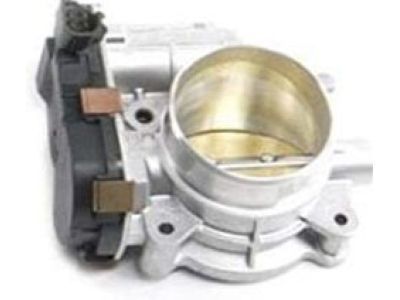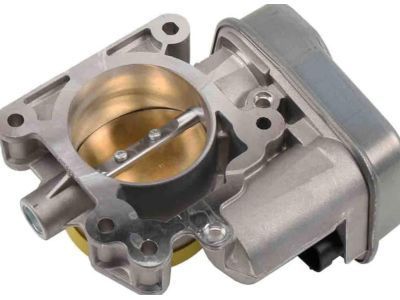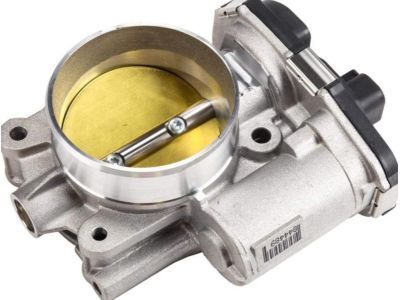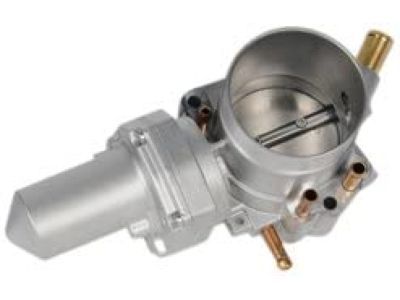My Garage
My Account
Cart
Genuine Saturn Vue Throttle Body
Fuel Injection Throttle Body- Select Vehicle by Model
- Select Vehicle by VIN
Select Vehicle by Model
orMake
Model
Year
Select Vehicle by VIN
For the most accurate results, select vehicle by your VIN (Vehicle Identification Number).
5 Throttle Bodies found
Saturn Vue Fuel Injection Air Meter Body (W/Throttle Actuator)
Part Number: 12609500$236.68 MSRP: $491.44You Save: $254.76 (52%)Ships in 1-2 Business DaysSaturn Vue Throttle Body Assembly (W/ Throttle Actuator)
Part Number: 12568796$174.16 MSRP: $328.60You Save: $154.44 (47%)Ships in 1-2 Business DaysSaturn Vue Throttle Body Assembly (W/ Throt Actr)
Part Number: 12694873$145.21 MSRP: $421.60You Save: $276.39 (66%)Ships in 1-2 Business Days
Saturn Vue Throttle Body
The Throttle Body of Saturn Vue automobiles is a vital control element that controls the quantity of fresh air entering into the engine according to the driver's accelerator pedal. As you can recall, the magnificent Throttle body is situated centrally between the air filter box and the intake manifold; it is fitted with a butterfly valve that tonically opens and closes to regulate the amount of air that is availed to the engine. The older models in the vehicle manufacturing industry incorporated Throttle Body Injection better known as TBI in which the modern augmented models embrace multi-port fuel injection system that incorporates separate fuel delivery mechanisms. ETC has taken over from mechanically linked system as it is more reliable and compatible with other features such as anti-lock brakes. Throttle bodies are cleaned or replaced to correct bad rough idle or stalling and TPS sensors, IAC valves and many others are replaceable.
Each OEM Saturn Vue Throttle Body we offer is competitively priced and comes with the assurance of the manufacturer's warranty for the part. Furthermore, we guarantee the speedy delivery of your orders right to your doorstep. Our hassle-free return policy is also in place for your peace of mind.
Saturn Vue Throttle Body Parts Questions & Experts Answers
- Q: How to remove and clean the throttle body on Saturn Vue?A: Disconnect the air intake duct from the throttle body. Open the throttle plate and check the area for residue build-up. If it's dirty, clean it with solvent or carburetor cleaner. Make sure that the cleaner is safe for use with catalytic converters and oxygen sensors. Disconnect the cable from the negative battery terminal. On V6 engines, pinch off the two coolant hoses to the throttle body. If you don't have tools suitable for doing this, drain the engine coolant until the level in the cooling system is lower than the throttle body. Remove the air intake duct. It can simply be disconnected from the throttle body and moved aside on some models. Disconnect the electrical connector from the throttle body. On 2004 and later V6 models, also disconnect the MAP sensor wiring. Disconnect any remaining coolant or air hoses from the throttle body. If you're working on a 2004 or later V6 model, remove the wiring harness bracket bolt from the throttle body. Remove the throttle body mounting nuts or bolts and carefully lift off the throttle body. Remove the 0-ring type throttle body gasket (four-cylinder engine). The manufacturer recommends replacing it with a new one regardless of its condition. V6 models use a different type of gasket than the four-cylinder engine-if it sticks, carefully remove all traces of gasket material. Discard the gasket; it should be replaced with a new one. Cover the intake manifold opening with a clean shop towel. Installation is the reverse of removal. Be sure to use a new gasket and tighten the throttle body fasteners. If you're working on a 2004 or later V6 model, perform the idle learn procedure. If you're working on a four-cylinder or 2003 or earlier V6 model, turn the ignition key to the Run (not Start) position for one minute, without depressing the accelerator pedal; this is necessary for the PCM to "learn" the position of the throttle plate.






